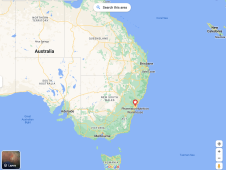aunsafe2015
New Member
Increasingly frequent power outages have led me to decide that I need a backup power solution ASAP even though I won't be able to have solar panels installed for another year or two. I'd like to choose batteries + inverter now that will be usable with a future 11-12 kW professionally installed solar array a year or two down the road. I'm trying to understand my options for doing that. As I understand it (and my understanding may well be wrong or very limited), the below would be some of the most common options. Any suggestions which is best, and whether or not there are other options I should be considering? Thanks for any input! BTW, portability is NOT a concern.
1) A critical loads subpanel + inverter + batteries. This requires a full blown subpanel where the individual critical circuit home runs are moved from the main electrical panel to the subpanel. To accommodate an 11-12 kW solar array in the future I'm probably looking at something like the Sol-Ark 8K or 12K. Has the advantage of potentially being automatic transfer to batteries, like a UPS. Apparent disadvantage is that if inverter goes down, the critical loads subpanel presumably goes down with it, even if grid power is working fine.
2) Same as above but instead of doing a critical loads subpanel, just do an interlock kit with a 30-amp inlet for battery output from the inverter during power outages connected to the interlock breaker. Advantage is that it's an easier install with no subpanel and all panel circuits potentially available for battery backup. Disadvantage is that I'd have to manually do the switchover to battery power during grid outages.
3) On Reddit, one guy did a Reliance Controls manual transfer switch, but kept his inverter+batteries plugged into the MTS power inlet 24/7, and left the MTS breakers in "generator" mode with the inverter in "pass-through" mode. Apparently he did 24/7 pass-through power from the inverter to the MTS, such that if there were a power outage, the inverter automatically switched from passing-through grid power to using the batteries to power the MTS. So it was a manual transfer switch that was effectively operating as an automatic transfer switch. Sounded like an interesting option because a full blown separate subpanel is not required, you get automatic transfer during power outages, but you could also get power to the circuits in the MTS directly from the main panel (rather than passing-through the inverter) if your inverter went down. No idea if this is a common solution or not but it sounded interesting.
4) Something like an EcoFlow Smart Home Panel + Ecoflow Delta Pro batteries. The problem I see with this one is that I don't think it's really compatible with my plan for 11-12 kW of solar panels in the future.
1) A critical loads subpanel + inverter + batteries. This requires a full blown subpanel where the individual critical circuit home runs are moved from the main electrical panel to the subpanel. To accommodate an 11-12 kW solar array in the future I'm probably looking at something like the Sol-Ark 8K or 12K. Has the advantage of potentially being automatic transfer to batteries, like a UPS. Apparent disadvantage is that if inverter goes down, the critical loads subpanel presumably goes down with it, even if grid power is working fine.
2) Same as above but instead of doing a critical loads subpanel, just do an interlock kit with a 30-amp inlet for battery output from the inverter during power outages connected to the interlock breaker. Advantage is that it's an easier install with no subpanel and all panel circuits potentially available for battery backup. Disadvantage is that I'd have to manually do the switchover to battery power during grid outages.
3) On Reddit, one guy did a Reliance Controls manual transfer switch, but kept his inverter+batteries plugged into the MTS power inlet 24/7, and left the MTS breakers in "generator" mode with the inverter in "pass-through" mode. Apparently he did 24/7 pass-through power from the inverter to the MTS, such that if there were a power outage, the inverter automatically switched from passing-through grid power to using the batteries to power the MTS. So it was a manual transfer switch that was effectively operating as an automatic transfer switch. Sounded like an interesting option because a full blown separate subpanel is not required, you get automatic transfer during power outages, but you could also get power to the circuits in the MTS directly from the main panel (rather than passing-through the inverter) if your inverter went down. No idea if this is a common solution or not but it sounded interesting.
4) Something like an EcoFlow Smart Home Panel + Ecoflow Delta Pro batteries. The problem I see with this one is that I don't think it's really compatible with my plan for 11-12 kW of solar panels in the future.




